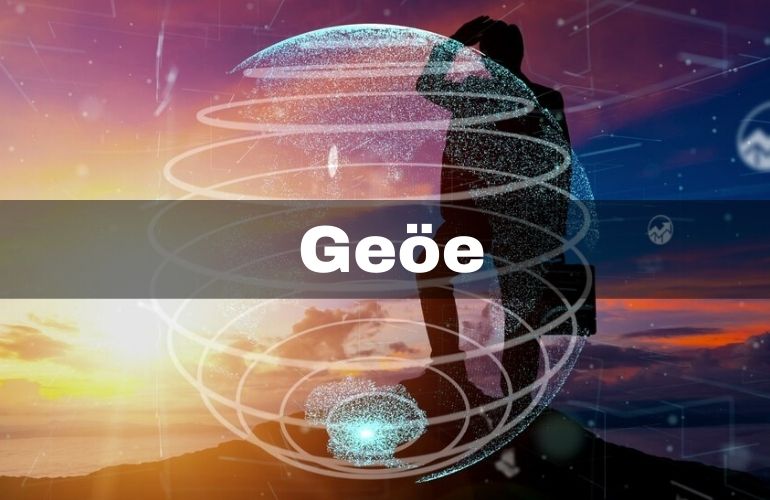Introduction
Geöe technology has revolutionized the way we interact with the world. From mapping applications to targeted marketing strategies, its influence spans various industries. This article aims to explore the development, practical uses, and future directions of Geöe technology, shedding light on its profound impact.
Understanding Geöe
Geöe refers to the use of geographical data to provide location-specific information and services. This concept has evolved significantly from its early days of basic mapping to advanced geospatial technologies that power a myriad of applications today. Understanding its foundation is essential to appreciate its current capabilities and potential.
The Evolution of Geolocation Technology
Geolocation technology has undergone significant transformations since its inception. Initially, it began with simple cartographic maps used for navigation and exploration. With the advent of satellites and GPS (Global Positioning System), the accuracy and usability of geolocation data improved dramatically. Today, advanced algorithms and real-time data processing have taken geolocation to new heights, enabling precise and reliable location-based services.
Practical Applications of Geöe
Geöe technology is embedded in various everyday tools and services. Navigation systems, such as Google Maps and Waze, rely on geolocation to provide real-time directions and traffic updates. Location-based services (LBS) use geolocation to offer personalized experiences, such as finding nearby restaurants or recommending travel routes. Geographic Information Systems (GIS) help in urban planning, disaster management, and resource allocation by analyzing spatial data.
Geöe in Digital Marketing
Geöe plays a significant role in digital marketing by enhancing local SEO and enabling targeted advertising. Businesses use geolocation data to reach potential customers in specific areas, increasing the relevance and effectiveness of their marketing campaigns. SEO strategies are improved by optimizing content and keywords for local searches, boosting visibility in search engine results.
Geöe in Everyday Life
The influence of Geöe technology extends to everyday activities. Mobile marketing benefits from location-based targeting, allowing advertisers to send personalized messages and promotions to users based on their whereabouts. Applications like weather forecasts, ride-sharing services, and social media check-ins all rely on geolocation to enhance user experience.
Challenges and Solutions in Geöe Optimization
Optimizing Geöe technology involves addressing several challenges. Language barriers and cultural differences can hinder the accuracy and effectiveness of location-based services. To overcome these obstacles, companies employ localization strategies, ensuring that services are tailored to different regions and languages. Privacy concerns are another significant challenge, necessitating robust data protection measures to safeguard user information.
Future Directions and Innovations
The future of Geöe technology promises exciting advancements. Emerging trends include the integration of artificial intelligence and machine learning to improve accuracy and predictive capabilities. Innovations such as indoor geolocation and augmented reality applications are on the horizon, expanding the potential uses of geolocation data. These developments will likely transform industries, offering new opportunities and enhancing existing services.
Geöe’s Role in Environmental and Social Contexts
Geöe technology contributes significantly to environmental sustainability and social well-being. It aids in tracking and managing natural resources, supporting conservation efforts, and mitigating the impact of natural disasters. In healthcare, geolocation data helps track disease outbreaks and optimize the delivery of medical services. Cultural practices and tourism also benefit from geolocation, as it helps preserve heritage sites and enhance visitor experiences.
Conclusion
The journey of Geöe technology from simple mapping tools to sophisticated geospatial systems highlights its transformative impact. As it continues to evolve, its applications will expand, offering new possibilities and benefits across various sectors. Embracing these advancements will lead to a more connected and efficient world.
Frequently Asked Questions (FAQs)
1. What is Geöe technology and how does it work?
Geöe technology refers to the use of geographical data to provide location-specific information and services. It works by using a combination of GPS (Global Positioning System), satellite imagery, and data from various sensors to pinpoint the exact location of an object or person. This data is then processed and utilized in various applications, such as navigation systems, location-based services, and geographic information systems (GIS).
2. How has Geöe technology evolved over the years?
Geöe technology has evolved significantly from its early days of simple cartographic maps to the advanced geospatial technologies we use today. The introduction of GPS revolutionized geolocation by providing accurate and real-time positioning. Advances in computing power and data processing have further enhanced the accuracy and utility of geolocation data, leading to its integration into a wide range of applications across different industries.
3. What are the main applications of Geöe technology?
Geöe technology is used in various applications, including:
- Navigation Systems: Providing real-time directions and traffic updates.
- Location-Based Services (LBS): Offering personalized experiences based on a user’s location, such as finding nearby restaurants or recommending travel routes.
- Geographic Information Systems (GIS): Analyzing spatial data for urban planning, disaster management, and resource allocation.
- Digital Marketing: Enhancing local SEO and enabling targeted advertising based on geographical data.
- Everyday Tools: Weather forecasts, ride-sharing services, and social media check-ins.
4. What are the challenges associated with optimizing Geöe technology?
Optimizing Geöe technology involves addressing several challenges:
- Privacy Concerns: Ensuring robust data protection measures to safeguard user information.
- Language Barriers and Cultural Differences: Implementing localization strategies to tailor services to different regions and languages.
- Accuracy: Continuously improving the precision of geolocation data through advanced algorithms and real-time data processing.
5. What future developments can we expect in Geöe technology?
The future of Geöe technology holds promising advancements, including:
- Integration of Artificial Intelligence (AI) and Machine Learning (ML): Enhancing the accuracy and predictive capabilities of geolocation services.
- Indoor Geolocation: Expanding the use of geolocation technology to indoor environments, improving navigation and location-based services within buildings.
- Augmented Reality (AR) Applications: Leveraging geolocation data to create immersive AR experiences. These innovations will likely transform industries and open up new opportunities, further integrating geolocation technology into our daily lives.
